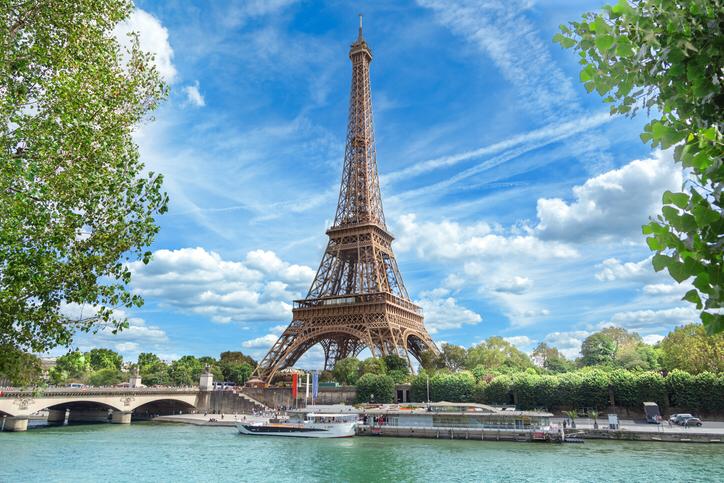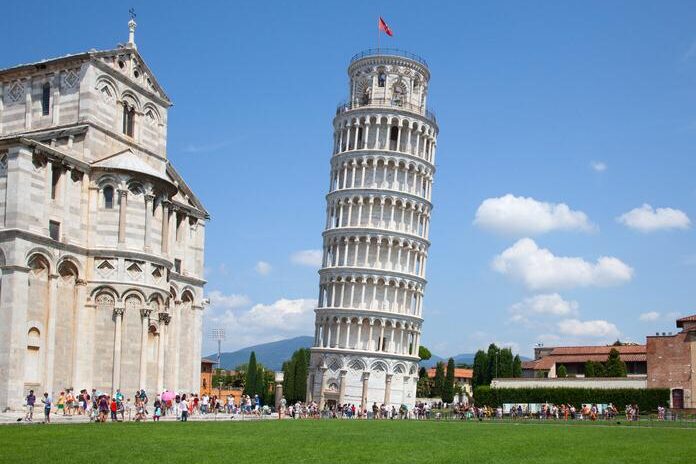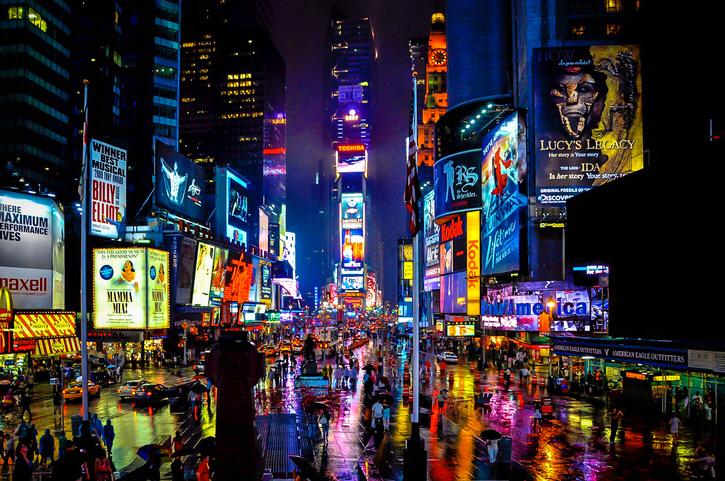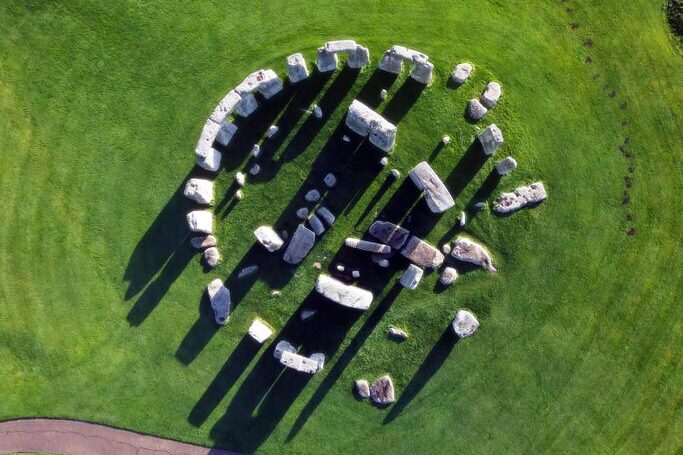1. The Eiffel Tower’s Temperature Trick

The sheer iron structure is not just a Parisian icon; it’s a colossal, living scientific instrument. For one weird reason, the Eiffel Tower literally grows and shrinks depending on the temperature. The immense iron lattice is subject to thermal expansion; during hot summer days, the sun-exposed side can heat up so much that the tower’s metal expands, causing the top to lean slightly away from the sun and increasing the overall height by up to 15 centimeters (about six inches). This subtle yet constant change is a magnificent, though invisible, demonstration of physical science on a monumental scale, proving the engineering is as dynamic as its views.
2. Chichén Itzá’s Serpent Shadow

The Mayan ruins of Chichén Itzá, specifically the Temple of Kukulkán (El Castillo), are famously overcrowded, but its design is a jaw-dropping calendar in stone. The temple is worth visiting for one weird, precise reason: its absolute astronomical perfection. During the spring and autumn equinoxes, the angle of the afternoon sun creates a unique shadow effect along the north stairway. The light and shadow form a stunning visual illusion of a serpent, Kukulkán, the feathered snake deity, slithering down the side of the pyramid to join a massive carved stone snake head at the base. This brief, perfect spectacle reveals the extraordinary architectural and astronomical knowledge of the ancient Maya.
3. Plymouth Rock’s Tumultuous Travels

What is today a rather small, underwhelming rock protected by a monumental portico is worth the trip for one weird reason: its history of being repeatedly broken and moved. While there’s no contemporary account of the Pilgrims actually stepping on it, this piece of granite became a massive American icon. Over the years, it was accidentally split in half during a move (in 1774), broken again, and pieces were even chipped off for souvenirs, reducing its size to a fraction of its alleged original form. Seeing it today, you are observing not just a supposed landing spot, but a symbol that has literally been shattered, rebuilt, and reduced by the very history it represents.
4. The Leaning Tower of Pisa’s Perpetual Balancing Act

The Leaning Tower of Pisa is notorious for its tilt, which started almost immediately due to soft subsoil, but the weird reason it’s worth a visit is not the lean itself, but the centuries of heroic, desperate attempts to straighten it. Through the medieval era, and again in the 20th and 21st centuries, engineers added heavy stone, removed soil, and installed cables in misguided and successful efforts to keep it from toppling. Today, thanks to modern, stabilizing restoration work completed in 2001, the tower is declared stable for at least another 200 years. Standing near it, you are not just seeing a mistake, but a triumph of engineering that corrected a flaw just enough to save it from collapse without losing its iconic, accidental charm.
5. The Colosseum’s VIP Crowd Control

Rome’s Colosseum is a must-see, but the weird reason to appreciate it, beyond the gladiatorial history, is its brilliant, ancient crowd management system. Built to hold an estimated 50,000 to 80,000 spectators, the Flavian Amphitheater was designed with a sophisticated network of 80 entrances (known as vomitoria), stairs, and segregated corridors. This elaborate, tiered system allowed the massive crowds, divided by strict social rank, to enter and exit the venue efficiently, with estimates suggesting the entire arena could be cleared in as little as 10 to 15 minutes. It represents a lost marvel of public facility planning that still rivals modern stadium design.
6. The Manneken Pis’s Wardrobe Changes

This small bronze statue of a urinating boy in Brussels often disappoints visitors with its diminutive size, but its weird reason for worth is its extensive, rotating, and utterly serious wardrobe. The statue is regularly dressed in one of its hundreds of elaborate costumes, a tradition dating back to 1698. The wardrobe includes regional dresses, historical uniforms, and outfits honoring visiting dignitaries, professions, and holidays. Seeing this tiny, cheeky figure sporting a firefighter’s helmet, a Dracula cape, or even a local sports team jersey elevates the statue from a simple fountain to a living, satirical, and surprisingly official cultural barometer for the city.
7. Mount Rushmore’s Secret Hall of Records

The massive presidential faces carved into Mount Rushmore are famous, but the unique reason the site is worth visiting lies hidden behind the sculpture of Abraham Lincoln. Originally, sculptor Gutzon Borglum envisioned a Hall of Records carved deep into the mountain to house the story of the four presidents and American history. Although the hall was never completed, Borglum managed to carve a 70-foot tunnel before his death. Later, in 1998, a porcelain enamel vault containing the Constitution, Declaration of Independence, and a short history of the memorial was sealed inside the unfinished tunnel, creating a “secret” time capsule in the granite.
8. Times Square’s Legal Neon Requirement

The sheer, blinding chaos of Times Square is often cited as a reason to avoid it, but its worth lies in one weird, commercial mandate: the legal requirement for brilliant illumination. Unlike other areas where billboards are simply commercial fixtures, the zoning laws in this small district specifically require building owners to install a certain amount of neon, brightly lit signage, or spectacular electric displays. This mandate ensures that the “Crossroads of the World” remains perpetually dazzling and is the true, factual reason for its unique, hyper-real atmosphere, making the light pollution a deliberately engineered marvel of urban design.
9. The Blarney Stone’s Back-Bending Ritual

Kissing the Blarney Stone in Blarney Castle, Ireland, is a quintessential “trap” involving crowds and a questionable history of hygiene, but its weird worth is the acrobatic, backward-lean required to do it. To receive the legendary “Gift of Gab,” visitors must lie on their backs, arch backward, and grasp iron railings to hang their head over a sheer drop between the castle’s wall and a battlement. The sheer physical commitment and slight peril of the awkward maneuver, all assisted by a Blarney Castle employee, turns a simple kiss into a moment of memorable, slightly ridiculous bravery, making the ritual itself the attraction.
10. The Little Mermaid’s Vandalism Resilience

The Little Mermaid statue in Copenhagen is a modest sculpture that many tourists are surprised to find is so small, but its unique worth comes from its history of repeated, often absurd, vandalism and subsequent restoration. Since its unveiling in 1913, the statue has been decapitated twice, had an arm sawn off, and been splashed with paint (from red to pink to blue). Each act of damage, and the subsequent meticulous restoration, has solidified the statue’s place not just as a tribute to Hans Christian Andersen, but as an enduring, slightly rebellious symbol of Copenhagen’s spirit and resilience against persistent mischief.
11. The Great Wall of China’s Strategic Stairways

The Great Wall is an undeniable feat of engineering, but the weird reason to appreciate it is the inconsistent, utterly exhausting changes in its construction and grade. Unlike a modern path, the wall was built to trace the natural contours of the mountains, which resulted in sections with wildly variable heights and impossibly steep stairs, sometimes with over 70-degree inclines. These “heavenly stairs” were built specifically to slow down and wear out any invading cavalry or infantry, making the sheer physical effort required to traverse certain sections a literal, immersive encounter with the Ming Dynasty’s strategic defensive design.
12. Stonehenge’s Acoustic Amplification

The prehistoric circle of Stonehenge is an ancient mystery that draws massive crowds, but the weird, factual reason it’s worth seeing is its ancient acoustic properties. Research suggests the original circle of Sarsen stones and the smaller Bluestones may have been designed to amplify sound within the structure. Standing in the center, a person speaking or playing music would have had their sounds amplified and reflected in a way that would have been profound and deeply spiritual to the surrounding crowd. It’s a silent architectural marvel today, but it was once a powerful, open-air sonic theater for rituals and gatherings.
So there you have it. The secret to enjoying a tourist trap isn’t fighting the crowds; it’s looking for the one absurd, historical, or surprisingly technical detail that makes the whole visit a strange moment of discovery. Sometimes, the most worthwhile journey is to the most obvious place, just for a very non-obvious reason.
Like this story? Add your thoughts in the comments, thank you.
This story 12 Tourist Traps Worth It for One Weird Reason was first published on Daily FETCH


